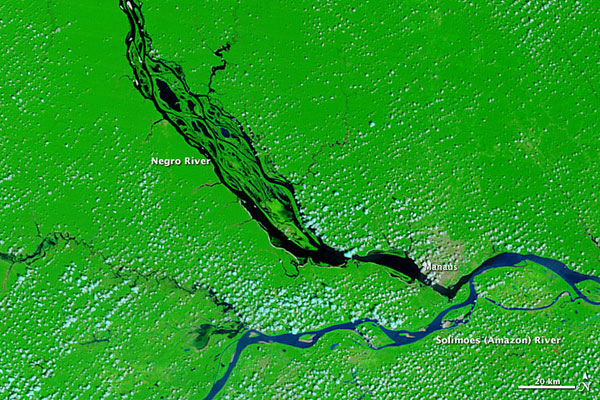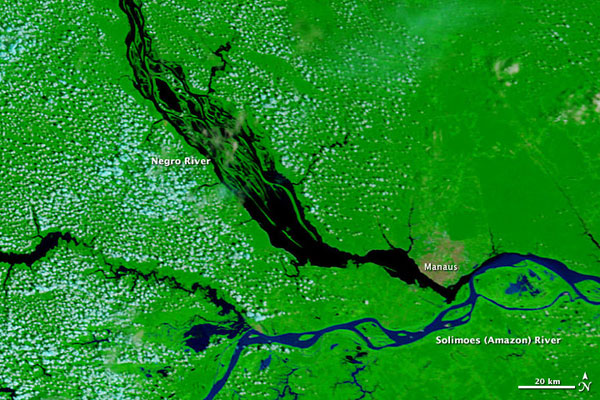
Drought Reshapes Amazon's 'Black River'

This year, severe drought through the Amazon Basin resulted in vast changes in the Negro River, a tributary of the Amazon; these images from NASA's Terra satellite illustrate the extent of the changes from 2008 to 2010.
The Rio Negro, as it is known in Brazil (meaning "Black River" in English), is the largest blackwater river in the world; these types of rivers have slow-moving water that becomes stained by chemicals that leach out of decaying vegetation, turning the waters the color of tea or coffee.
As of Dec. 3, the Negro River, one of the Amazon's largest tributaries, reached a record-low of 43 feet (14 meters) at the port in Manaus, the capital of the state of Amazonas in Brazil. This record low comes just 16 months after the river set a record high of 98 feet (30 meters), which flooded Manaus.
The top image is from Dec. 10, 2010, while the lower image was taken on Dec. 9, 2008. Both include infrared and visible light in a combination that highlights the presence of water on the ground. Clear water is black, while sediment-laden water, such as the Amazon River, is dark blue. Clouds are pale blue and plant-covered land is green.
The most notable difference in the Negro River is the braided channels northwest of Manaus. Braided channels are an indication that a river has taken up more sediment than it can move effectively. The river is often carved into braided channels as the sediment changes its shape.

Many of the channels even disappeared, and the ones that remain have shrunk significantly. Even the main body of the river near Manaus is noticeably narrower. The Amazon River has also changed; tan islands dot the Amazon where water had been in 2008.
This year's drought occurred on the heels of a similar 'once-in-a-century' drought in 2005. In both cases, the dry weather was connected to warmer water temperatures in the tropical Atlantic Ocean. The warm water altered weather patterns, pulling rain to the north and keeping the Amazon dry .
Sign up for the Live Science daily newsletter now
Get the world’s most fascinating discoveries delivered straight to your inbox.
According to news reports, the drop in the water level stranded villages that rely on the rivers for transportation and caused food and water shortages.










